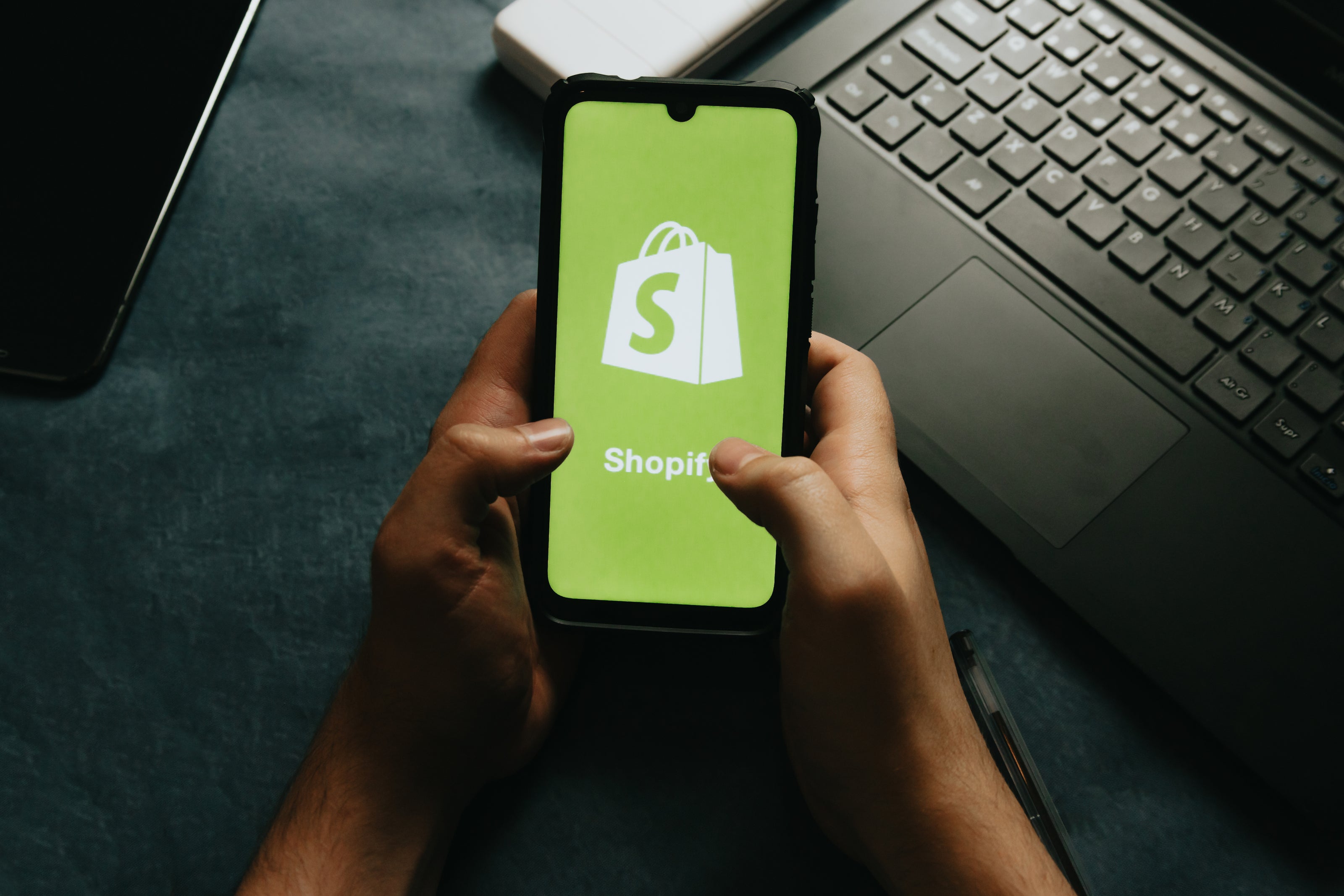
Dropshipping Branding Strategies: Building a Brand with Dropshipping in 2025
Share
In the competitive world of e-commerce, having a strong brand is essential for success, especially in dropshipping. This article explores effective dropshipping branding strategies that can help you stand out and build a loyal customer base. By implementing these strategies, you can create a memorable brand that resonates with your audience and drives sales.
Key Takeaways
- Dropshipping branding strategies are crucial for standing out in a crowded market.
- Choosing a specific niche can enhance your brand's uniqueness and appeal.
- Creating a strong brand identity involves designing a memorable logo and telling your brand story.
- Social media platforms are powerful tools for promoting your dropshipping brand.
- Providing excellent customer service fosters loyalty and can lead to repeat business.
Understanding Dropshipping Branding Strategies
Defining Dropshipping and Branding
Alright, let's break it down. Dropshipping is like selling stuff without actually having it on hand. You list products, and when someone buys, the supplier ships it directly to them. No warehouse, no hassle. The profit? That's the difference between what you charge and what you pay your supplier. Branding, on the other hand, is all about creating a vibe or identity for your business that sticks in people's heads. It's like why folks love Nike or Apple. They know what they're getting.
The Importance of Branding in Dropshipping
So, why bother with branding if you're just dropshipping with Alibaba? Well, in such a crowded market, it's your brand that makes you stand out. It’s not just about the products; it’s about the experience. Good branding can turn a random shopper into a loyal customer. Think about it, if you’re selling in popular dropshipping niches, having a strong brand can be the reason someone picks you over another.
How Branding Differentiates Your Business
Branding is what sets you apart from the sea of other sellers. It’s how you show what makes your business unique. Maybe it's your killer customer service, or maybe it’s that your products have a personal touch. Whatever it is, branding highlights your strengths. Plus, it can help you push up that dropshipping profit margin by allowing you to charge a bit more for the perceived value.
Building a brand in dropshipping isn’t just a nice-to-have; it’s a must if you want to thrive. It’s what keeps customers coming back and helps you grow in the long run.
And there you have it, the basics of dropshipping branding strategies. It's not rocket science, but it does take some thought and effort to get it right.
Choosing the Right Niche for Your Brand

Identifying Your Passion and Knowledge
Choosing a niche in dropshipping is like picking a favorite hobby. It's important to find something you're passionate about or know a lot about. If you love gadgets, maybe tech accessories are your thing. Passion keeps you motivated, and knowledge gives you an edge. Think about what excites you or what you can't stop talking about. That's your starting point.
Analyzing Market Trends
Next, look at the market trends. Are people buzzing about eco-friendly products? Is there a surge in home workout gear? Trends can guide you to a niche with potential. You can use online tools or just keep an ear to the ground. It’s like being a detective, finding clues about what people want. The more you know, the better you can serve your customers.
Balancing Profitability and Interest
Finally, balance your interests with profitability. You might love vintage toys, but if no one’s buying, it’s a tough sell. Check if your niche has a good profit margin. You want something that sells well but also keeps you interested. It’s like finding the sweet spot between what you love and what pays the bills.
Picking the right niche is key to building a strong community, lowering advertising costs, and attracting targeted customers. It's about finding that perfect match between passion and market demand.
Creating a Strong Brand Identity
Designing a Memorable Logo
A logo is like the face of your brand. It speaks volumes about your business without saying a word. Whether it's a typographic logo that spells out your brand name or a symbol that captures the essence of what you offer, make sure it stands out. Think about what you want your logo to say about your business. Is it playful, professional, or something else entirely? Whatever it is, make sure it shows on your packaging and everywhere your brand appears.
Crafting a Compelling Brand Story
Every brand has a story, and yours should be no different. Why does your business exist? What's the big idea behind it? Sharing this story can connect you with your audience on a deeper level. It’s not just about selling products but about creating an experience that sticks. Write it down and share it on your website, in your marketing materials, and whenever you can.
Establishing Brand Values and Mission
Your brand values are what you stand for, and they can be a big deal to customers. People like to shop with brands that share their values, so make sure yours are clear and upfront. What do you believe in? What's your mission? When you know these things, it helps guide every decision you make, from the products you sell to the way you talk to your customers.
A strong brand identity isn't just about looking good; it's about being clear about who you are and what you stand for. This clarity helps build trust with your customers and makes your brand more memorable.
Building a User-Friendly Online Store

Optimizing Website Navigation
Making your online store easy to navigate is like putting up clear road signs on a highway. Customers should find what they're looking for without getting lost. Keep menus simple and logical. Use categories that make sense and are easy to understand. A search bar is a must-have for those who know exactly what they want.
Enhancing Mobile Responsiveness
Nowadays, a lot of folks shop on their phones. If your store doesn't look good on mobile, you're missing out. Make sure your site adjusts well to different screen sizes. Test it out on various devices to see how it performs. A mobile-friendly site keeps customers happy and coming back.
Ensuring Fast Load Times
Nobody likes waiting, especially online. If your store takes forever to load, customers might just leave. Compress images and minimize code to boost speed. Fast load times can make or break the shopping experience. Aim for a few seconds max to keep visitors engaged.
A user-friendly store is like a well-oiled machine. Everything should work smoothly, keeping customers satisfied and eager to return.
Leveraging Social Media for Brand Promotion
Choosing the Right Platforms
Social media is like the wild west for marketing—tons of opportunities if you know where to look. Picking the right platform is key. If you're selling trendy outfits, Instagram or TikTok might be your playground. For something more professional, LinkedIn could be the way. Each platform has its own vibe and audience, so knowing where your potential customers hang out is crucial.
Engaging with Your Audience
Once you know where to post, it's time to talk to your audience. And not just talk—really engage. Ask questions, reply to comments, and share user-generated content. People love feeling heard and valued. It's not just about making sales; it's about building a community around your brand.
Utilizing Influencer Partnerships
Ever heard of influencer marketing? It's like word-of-mouth on steroids. Teaming up with influencers can get your products in front of a massive audience. But pick wisely—make sure their followers are your potential customers. A good influencer can boost your brand's credibility and reach in no time.
Social media isn't just a place to post pretty pictures. It's where your brand can come alive, creating connections that turn followers into loyal customers. Make your brand human, and you'll see the difference.
Enhancing Customer Experience and Loyalty
Providing Exceptional Customer Service
So, when it comes to keeping your customers happy, good service is the name of the game. It's not just about fixing problems like returns or delivery issues. It's more about offering a personal touch. Think of it like this: when you have a problem, you want someone to listen, right? Well, your customers feel the same. Make sure you've got different ways for them to reach out, like phone, email, or live chat. And hey, being available 24/7 doesn't hurt either.
Implementing Feedback Mechanisms
Feedback is like gold. Seriously. You gotta know what your customers think to make things better. Set up ways for them to leave feedback easily. You could use surveys, comment sections, or even direct emails. The key is to actually listen and make changes. When customers see their opinions matter, they're more likely to stick around.
Offering Personalized Experiences
Everyone likes to feel special, right? Personalizing the shopping experience can really boost loyalty. Use customer data to send personalized emails or recommendations. Maybe offer special discounts on their birthdays or anniversaries. Little touches like these make customers feel valued and more likely to come back for more.
Keep in mind, making customers feel appreciated isn't just a nice thing to do—it's a smart business move. Happy customers are repeat customers, and that's what you want.
Utilizing Private Labeling and Custom Packaging

Understanding Private Labeling Benefits
Private labeling is like having your cake and eating it too. You get to sell products that have your brand name on them, even though someone else made them. This means you can create a unique brand identity without having to invent a new product from scratch. Private label dropshipping involves selling third-party products that feature your own branding or designs directly to customers. It's a sweet deal because you get more control over how your products look and feel, making your brand stand out in a crowded market.
Designing Custom Packaging
Custom packaging is like the wrapping paper on a gift. It's the first thing your customers see when they get their order, so you want it to be memorable. Think about using colors and designs that match your brand's vibe. You can even add little extras like thank-you notes or discount codes. Here's a quick list of ideas:
- Use bold colors that match your brand.
- Include a personalized thank-you note.
- Add a small freebie or sample.
Collaborating with Suppliers
Working with suppliers is key when you're doing private labeling and custom packaging. You need to find suppliers who are willing to put your brand on their products. It's not always easy, but platforms like Alibaba or CJDropshipping can help you find the right partners. They usually want to see some sales history before they commit, so be ready to show them what you got.
Custom packaging and private labeling let you create a brand that people remember. It's not just about the products; it's about the whole experience from the moment they open the package. Make it count.
Implementing Effective Marketing Strategies
SEO Best Practices for Dropshipping
Search Engine Optimization (SEO) is like the secret sauce to getting your dropshipping store noticed. Think of it as making sure your shop is easy to find when people are looking for what you sell. Start with keyword research to know what your potential customers are searching for. Use these keywords naturally in your product descriptions, titles, and even blog posts. Make sure your site is mobile-friendly, loads quickly, and has a clean design. These things help improve your ranking on search engines.
Email Marketing Campaigns
Email marketing is still one of the most effective ways to connect with your audience. Get new subscribers by offering something in return, like a discount or freebie. Send out regular newsletters with updates, promotions, and personalized product recommendations. Personalization is key—use your customer's name and suggest products they might like based on their past purchases. This makes them feel special and more likely to buy.
Paid Advertising Tactics
When it comes to paid ads, you want to make sure you're getting the most bang for your buck. Platforms like Facebook and Google offer targeted advertising, which means you can show your ads to people who are most likely to be interested in your products. Set a budget and keep an eye on your ad performance. Use analytics to see what's working and what's not, and adjust your strategy as needed. This way, you're not just throwing money down the drain but actually investing in growing your business.
Successful marketing isn't just about selling products—it's about creating a connection with your audience. By using SEO, emails, and ads wisely, you can build a brand that people remember and trust.
Monitoring and Adapting Your Branding Strategy

Analyzing Brand Performance Metrics
Keeping an eye on how your brand is doing isn't just smart; it's necessary. Metrics like sales numbers, customer feedback, and website traffic tell you what's working and what's not. You could use tools like Google Analytics to track these numbers. It's like checking your car's dashboard; you need to know when to fill up the tank or when something's off.
Staying Updated with Industry Trends
The world is always changing, and so should your brand. Trends come and go, and it's important to stay in the loop. This means keeping an eye on what your competitors are doing, what's hot on social media, and even what's happening in the news. Sometimes, a trend might inspire a new product or a fresh marketing angle.
Adjusting Strategies Based on Feedback
Feedback is gold. Whether it comes from customer reviews or social media comments, it can guide your next steps. If people love a certain product, maybe it's time to promote it more. If they're not so happy, figure out why and fix it. It's like having a conversation with your customers, and you should always be ready to listen and adapt.
Keep your branding strategy flexible. The market changes, and so should you. Adaptation is key to staying relevant and successful.
Final Thoughts on Dropshipping Branding Strategies
In conclusion, building a brand through dropshipping is not just about selling products; it's about creating a memorable experience for your customers. By focusing on a specific niche, offering quality products, and providing excellent customer service, you can set your brand apart from the competition. Remember, branding takes time and effort, but the rewards are worth it. A strong brand can lead to loyal customers and long-term success in the dropshipping business. So, take the steps necessary to establish your brand identity, and watch your business thrive.
Frequently Asked Questions
What is dropshipping and how does it work?
Dropshipping is a way to sell products without keeping them in stock. You sell items through your online store, and when someone buys something, the supplier ships it directly to the customer.
Why is branding important in dropshipping?
Branding helps your business stand out. It builds trust with customers and makes them more likely to choose your products over others.
How can I choose the right niche for my dropshipping store?
Pick a niche that interests you and that you know about. Look at market trends to see what products are popular and find a balance between what you like and what can make money.
What should I include in my brand identity?
Your brand identity should have a unique logo, a story that connects with customers, and clear values that show what your brand stands for.
How can I promote my brand on social media?
Choose the right social media platforms for your audience. Engage with your followers by sharing interesting content and consider working with influencers to reach more people.
What can I do to keep customers coming back?
Offer great customer service, listen to feedback, and create personalized experiences to make customers feel valued.
What is private labeling in dropshipping?
Private labeling means selling products made by someone else but putting your own brand name on them. This helps create a unique identity for your products.
How can I measure the success of my branding efforts?
Look at customer feedback, sales numbers, and how many people recognize your brand. These metrics can help you understand if your branding is working.










































































































